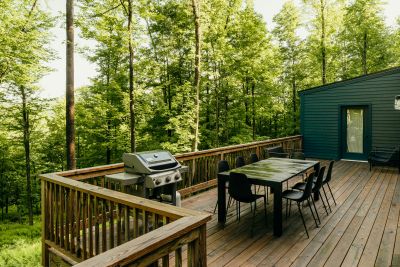Case study: A second opinion that changed a buyer’s decision

A second opinion that changed a buyer’s decision
The brief
A buyer asked us for a second opinion on a 1930s stucco home after another inspector issued a largely positive report. Our brief: validate risks before going unconditional. In this blog, we will primarily discuss critical items that the previous inspector missed, which could have cost our client tens to hundreds of thousands of dollars to remediate.
Headline outcome
Our inspection identified several safety, compliance, and durability issues—some downplayed or not mentioned in the first report—that would materially affect maintenance budgets and negotiation strategy.
What the first report said was “fine”… and why it wasn’t
- Moisture
First report: “No weather tightness or moisture issues”
What we found: Many elevated moisture readings around window joinery and a wet indication behind the shower. We recommended an invasive investigation as there were significant weather-tightness issues due to the design and failure of the systems. There was also obvious moisture damage. - Subfloor & wood borer
First report: Subfloor "some borer typical for age.”
What we found: Substantial borer damage visible throughout the sub floor framing rendering much of the framing integrity as compromised due to the extent of borer damage noted. - Outbuilding (detached studio)
First report: “Average but usable condition for age.”
What we found: Dilapidated: unstable subfloor, roof cladding rusted under paintwork, aged weatherboards, blocked/sagging gutters, and exposed copper wiring (urgent safety issue). Remediation is likely uneconomic for this structure. - Floor levels
First report: “Pass” within MBIE tolerances.
What we found: Floor level deviations exceeded MBIE guidance in places. That doesn’t prove earthquake damage on its own, but it does warrant subfloor investigation to separate historic settlement from seismic movement.
Important items the first report didn’t flag
- Stormwater to a stream – Downpipes from the main dwelling discharge directly to a public stream. Buyers should confirm council compliance and allow budget for rectification if required.
- Aged services – Old galvanised water piping observed; prone to internal corrosion and leakage—plumber assessment recommended.
- Ceiling-space electrical risk – Exposed copper wiring at connectors and live electrical cables further electrician checks recommended.
- Site structures – A small bridge appeared to have potential structural damage driveway and deck/retaining near the stream warrant engineering review.
Why this matters
Individually, each item might look manageable; together, they shift the total cost of ownership and the negotiation position—especially where weathertightness, subfloor integrity, or electrical safety are in play.
Wood borer: what we saw and what to do
- Observed condition: Borer damage to subfloor timber more extensive than “typical for age.”
- Risks: Progressive loss of strength in joists/bearers, bounce/deflection, and costly staged repairs if left unchecked.
- Recommended next steps:
- Commission an assessment by a pest control specialist to assess the infestation and quantify damage.
- If confirmed, assess financial viability of remediation. Plan targeted timber repairs/replacements and borer treatment, alongside moisture and ventilation improvements.
Our approach (and why it’s different)
- Risk-led testing: We target high-risk junctions (joinery, wet areas) rather than relying on broad “spot checks.”
- Clear next steps: We specify the right specialists—engineer, plumber, electrician—so buyers can act with certainty.
- Balanced context: We explain what’s typical for age vs. what’s a major item so you can prioritise.
Recommended next steps for a buyer in this situation
- Specialist assessments: subfloor/borer (remote), electrician (studio wiring, ceiling-space risks), plumber (galvanised pipes), and roofing/drainage.
- Targeted invasive checks: behind the shower and at window junctions where elevated readings were recorded.
- Council checks: stormwater discharge compliance and any historical alterations (e.g., load-bearing wall removal).
- Budgeting & negotiation: use quantified findings to set realistic budgets and adjust offer terms as needed.
Book in an inspection with us.
If you would like help making an informed decision on your next property purchase, check out our pre-purchase property inspection page - Here
You may also like...
Stay informed with our expert property advice.
What Our Clients Say
Don't just take our word for it - see what our satisfied clients have to say about their experience with Inspected Residential.
Ready to Make Informed Property Decisions?
Don't let uncertainty cloud your property journey. Our comprehensive building inspection reports provide the clarity and confidence you need to make informed decisions.






.jpg)




